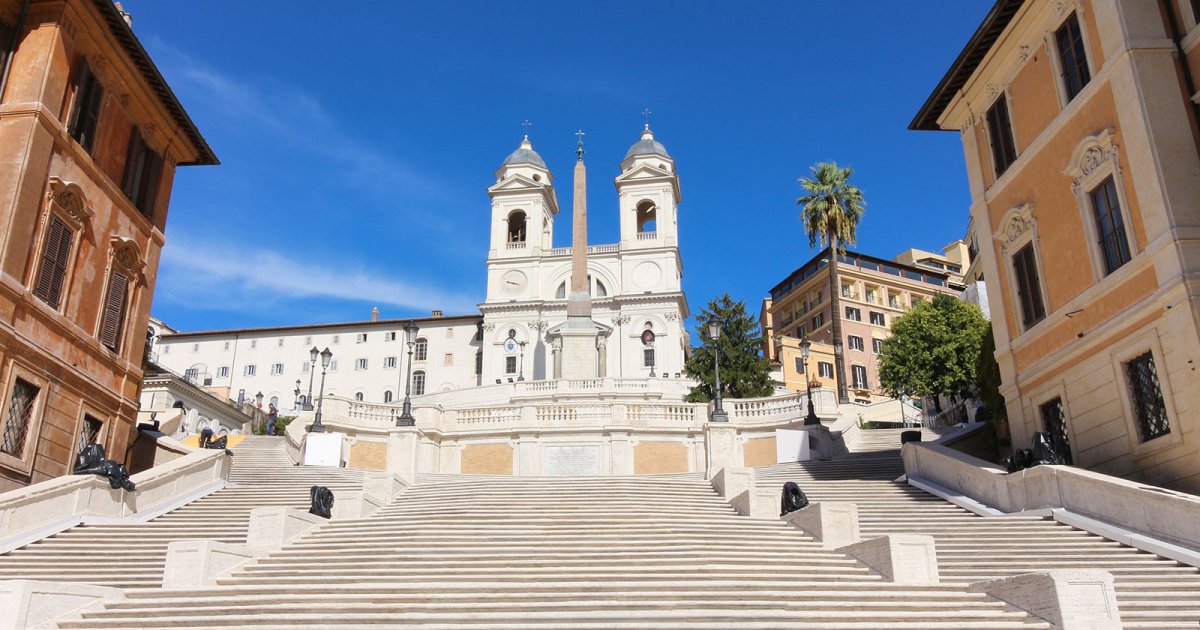PIAZZA DI SPAGNA, The Spanish Steps
 Language: English / USA
Language: English / USA
Hi, I'm James, your personal guide. Together with MyWoWo, I'd like to welcome you to one of the wonders of the world.
Today I'll accompany you through the Spanish Steps.
Piazza di Spagna is one of the most scenic spots in Rome!
The square where you now stand, perhaps on the famous Staircase of the Trinità dei Monti, or Spanish Steps, gets its name from the palace that is still home to the Spanish Embassy at the Holy See, and lies at the foot of the Pincian Hill at the end of the elegant Via Condotti. Its fantastic scenery is a perfect background for shows, fashion shows, worldly events, and floral decorations.
You should know that this area began to take on its present form in the 15th century, when the Franciscan church Trinità dei Monti, or Trinity of the Mountains, was built with its two twin bell towers. The Egyptian obelisk in front of the façade was placed there on the pope's request at the end of the 16th century.
The citizens of Rome had a hard time reaching the church and nearby Villa Medici from Piazza di Spagna, as there were only two inconvenient paths leading up the hill.
The decision to build the staircase was made in 1660, but the work only began sixty years later following the pope's explicit order. They proposed a competition for the design of the staircase, and you are looking at the winning selection: a large staircase with twelve travertine ramps decorated with garden terraces, with a total of 135 steps. Note the alternation of ramps and balconies that snake up the hill separating and rejoining: it creates scenic and extremely varied movement, where straight, curved, and polygonal paths follow one another. In this way, the stairway frees itself from the requirements of overly regular structures and harmoniously integrates with the urban space. Thus any observer coming from a distance can appreciate it first in its entirety, and then admire the richness and variety of its scenic effects as they approach the stairway and then climb up it. Try to do so yourself, and you'll see that it will be the same for you as well.
FUN FACT: even though the square is called "di Spagna", or "of Spain", the Spanish Steps are mostly tied to France. They were in fact requested and financed by a French cardinal and diplomat, which is why the Church of the Trinity of the Mountains also celebrates mass in French, Villa Medici is home to the Academy of France, and the stones at the base of the staircase have fleur-de-lis carved into them!



